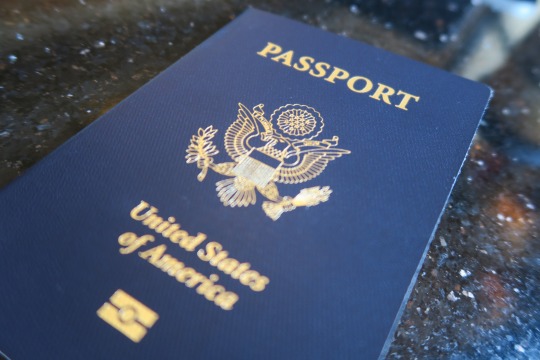Text
EPIK: Winter vs Fall, Regular vs Late Intake

Goofy Foot, Foreigner Bar, Jeju-si
Regular Fall Intake - Late August - Don’t do it. If you can wait until winter intake, then you would be doing yourself a favor.
Late Fall Intake - Late September - HAH. The worst time to start.
Regular Winter Intake - Late February - The BEST time to start.
Winter Late Intake - Late March - Ideally, you want to attend orientation and then teach, but that’s why this is a little awkward. You’ll have just missed the winter orientation, so you’ll be attending a slightly shorter make-up orientation after you start teaching and living in Korea. But at least you’re still starting near the beginning of the academic year! I’ll take any intake in winter over fall.

Imagine this: It’s February. You arrive in Seoul a day before orientation. You are exhausted from the flight, but excited to make some new friends and explore Seoul. After you check into an interesting hostel near the airport, as planned, you meet up with a couple other new EPIK teachers from the facebook group. Everyone is a bit awkward, but really friendly. There’s a 30-year-old adventurous backpacker dude with nothing but stories about the 29 countries he’s traveled. There’s the corky young lady with big hair and an all-trends-breaker kind of fashion. And then there’s everyone else. Mostly inexperienced travelers, straight out of college, couldn’t figure out what to do with your degree, but some combination of kpop, kdramas, and the idea of dating a Korean brought you here! You all happily take a cab together, since some people offer to split the fare. Then you find yourself exchanging details about your education, recent break-up, and lack of income over really good Korean barbecue. Who knew you would have so much in common with the person sitting across from you!
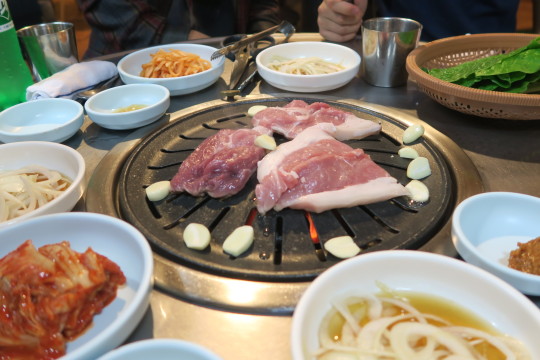
Later that night, you’d head back to your hostel and realize a couple of you are at the same hostel! Wow, amazing. You’re really good friends now, so the three of you decide to head to the orientation pick up spot altogether the next day. The EPIK orientation leads were so friendly and you had so much fun getting to know everyone and learning about Korea. You passed the medical exam, learned survival Korean phrases that you already knew, and presented your first terrible English lesson plan after taking the shortest crash course on lesson planning.

After all that hard work at orientation, you finally enjoy 3 hours of free time, before it’s goodbye, pack your bags, and head to your provinces. Fast forward to post-orientation, you finally arrive at your new home, you meet your co-teacher and she’s speaks just enough English, so she can do everything for you (set up bank account, set up school lunch auto-fee, set up internet, help you get a phone, etc.) She gives you a tour of the school and shows you to your classroom. Your school has an assembly to welcome all the faculty back and introduce the new teachers, including you!

It’s the beginning of the new school year, the students are excited to meet you and you are so ready! This is February intake.
Okay, so this sequence is a bit optimistic, so let’s just say I left out the traumatic stuff (like getting lost), but overall, this is what’s possible with a February intake. This is NOT my experience. This is the OPPOSITE of my experience. BUT this is what almost everyone from February intake told me they experienced. If I could do it all over again, I would. I’d go in February. So, yeah, you’re welcome.
Wanna hear what my experience was like? Wanna know what Fall Late Intake is like? No. You don’t. But in case you do, read below.
Since Korea’s academic year begins early March, this will allow you to establish yourself as the English teacher for the year. Have you ever had a substitute teacher come into your class half way through the year and say “I’ll be your teacher the rest of the year.” YEAH, it’s not pretty. That’s a hard job. Coming in during Fall makes you.... a LONG TERM SUBSTITUTE. No one took me seriously. You know why? NOT even my co-teacher took me seriously. You know why? I’ll tell you why. Because that means the foreigner before me... QUIT. So to them, we’re a bunch of quitters. If that one ran out in the middle of the school year, guess what they think I’ll do?
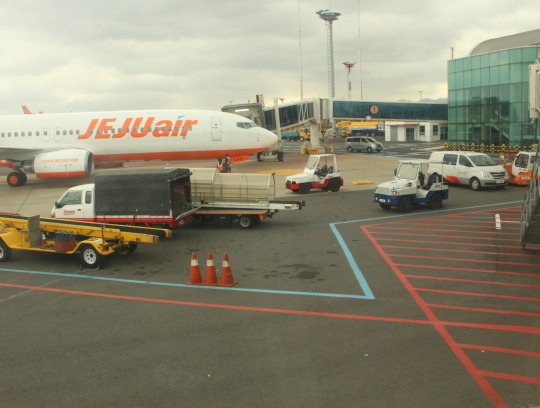
Imagine this: It’s late September. You arrive in Seoul. Customs asks me why I’m here. I tell them, I’m here as an EPIK English teacher. They think I’m lying. They escort me out of line and sit me in a room. They ask me again, what I’m doing in Korea. I tell them the same thing. They ask me a series of questions, “What is your full name? How long will you be staying in Korea? Have you been to Korea before?” all in Korean, so I could only answer the first 3 questions. After that, I didn’t know how to answer the rest of them, so this delayed me for another 10 minutes. FAIL#1. They finally let me go. I ask the officer escorting me to the bypass, how to get to Gimpo Airport because my flight is in 40 minutes. He reads my itinerary and laughs, because he thinks I won’t make it. He gestures down the escalators and I sprint down them to find the baggage carousels are empty! I ran around and luckily found the guy that was about to haul my baggage to the unclaimed storage room. SUCCESS#1. I have 30 minutes. I can’t find the subway. FAIL#2. I exchange some USD into KRW so I can pay for a bus fare to Gimpo. I find the right bus line to Gimpo with the help of an English-speaking flight attendant! SUCCESS#2. We board the bus and I have 20 minutes until my flight. She tells me the bus ride to Gimpo takes 40 minutes. FAIL#3. I arrive at Gimpo and since my previous flight was delayed, they allowed me to take the next flight out. Ticket changed! SUCCESS#3. Gimpo Airport is 2 floors. You have to manually transfer your baggage when traveling from Incheon to Gimpo. I fell down the escalator trying to stop my 2 check-in suitcases from rolling down. FAIL#4. I make it to Jeju Airport and luckily my director and handler are still there! SUCCESS#4. They take me to immigrations to apply for an ARC (ID card). Immigration says it takes 24 hours after I arrive in the country for my information to appear in their database. I must come back the next day. FAIL#5. My handler tells me that without an ARC, I cannot apply for cell service, internet, or a bank card. It takes an additional 3-5 weeks to receive the ARC in the mail. FAIL#6. They take me to my studio apartment (INSTEAD OF ORIENTATION--that’s right there is no orientation until October 20th). FAIL#7. Studio apartment is infested with bugs and mold. Seems like the unit was abandoned years ago and no one ever cleaned it. FAIL#8. Had to go straight to school after dropping my baggage in the studio, where we would learn that the head teacher would hate everything about me. She hated that I was young. She hated that I didn’t speak Korean. She hated that I had never been to Korea. FAIL#9. My co-teacher wasn’t there. FAIL#10. Head teacher handed me a class schedule that I couldn’t comprehend. FAIL#11. During lunch time, I couldn’t eat at the school cafeteria because my lunch automated fee wasn’t set up yet. I would need an ARC for them to set that up. FAIL#12. Head teacher asked me to lesson plan from the textbook without giving me any chapter, direction, or assistance. FAIL#13. When I stopped by her classroom for help, she said she would come and get me when she has time. She never did. At 5pm, I walked out of my classroom and found all the lights were already switched off. I was locked inside the school BY MYSELF. FAIL#14. I tripped the surround sound alarms trying to open the front doors of the school. FAIL#15. I panicked and jumped out of a window from the second floor, hurting my ankle. FAIL#16. Kids on the field witnessed this and were in shock. Hello, nice to meet all of you. I am your new English teacher. FAIL#17. Apparently, the wall I cascaded down was freshly painted in white. My jeans were black. FAIL#18. I made it just in time and caught the bus before it left! Unfortunately, it wasn’t the bus home. FAIL#19. I contacted my handler and the director about directions to my studio apartment. They texted me two different routes with 2 different bus stops. FAIL#20. They were both wrong. FAIL#21. I ended up at the bus terminal around 10pm, as the director advised me to do after waiting around various bus stops without any luck. I caught the last bus to JFLHS. SUCCESS#5. The bedding was damp. I slept on the floor with the bugs. FAIL#22. I woke up the next day with a huge swollen foot from multiple mosquito bites. FAIL#23. I could not get my BIG ass foot to fit into my shoes. FAIL#24. It was humid, pouring rain, and my foot became infected from walking barefoot. FAIL#25. The director called me a cab to take me into the city to see a skin doctor. He told me insurance wouldn’t cover the visit because I don’t have any without an ARC. FAIL#26. I paid out of pocket. But it was only 30,000 KRW (30 USD)! SUCCESS#6. Co-teacher asked me to come into school even with my swollen foot. I went school.

Co-teacher didn’t respect me either. She wouldn’t let me teach. Asked me to do as I was told. Basically, prepare materials and repeat vocabulary words after her so the class can hear my accent. Felt like a puppet. FAIL#27. For weeks, I ate by myself during an odd hour. Teachers asked me to move so they and the students could sit. No one showed me the ropes and I felt unwanted. It was rough. But I stayed, because I told myself it could only get better. That was my September and October. That’s what can happen if you come in after a runner. (If you don’t know what that means, it’s basically an EPIK teacher that quits abruptly, packs their bags and leaves without notifying their school). Save yourself the drama and judgement. Start in the winter!
3 notes
·
View notes
Text
List of EPIK Teacher Housing Locations on Jeju Island
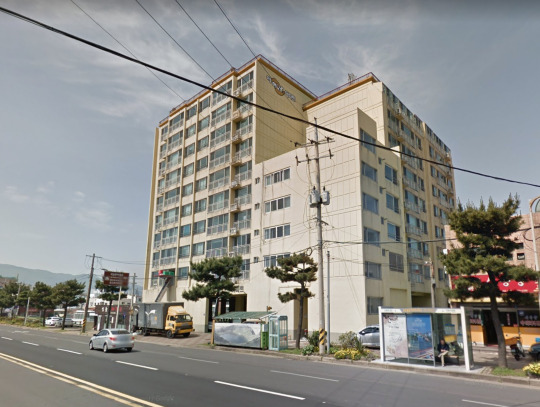
Photo of 미듬 하나로 아파트 aka Midum Hanaro Apartments
Imhang-ro, Geonip-dong, Cheju, Jeju-do, South Korea
photo source: google maps
Jeju Island has two main parts: North and South. The North is called Jeju-si (Jeju City) and the South is called Seogwipo-si (Seogwipo City). These are the 4 main EPIK teacher housing locations in the northern part of Jeju Island.
Midum Hanaro Apartments (미듬 하나로 아파트)
Imhang-ro, Geonip-dong, Jeju-si, Jeju-do
GPS Coordinates: 33.515340, 126.538282
Marion House (메르헨하우스 III)
722-3 Nohyeong-dong, Jeju-si, Jeju-do
GPS Coordinates: 33.4821005,126.4860072
JFLHS Teacher Dorm, Aewol
Goseong-ri, Aewol-eup, Jeju-si, Jeju-do
GPS Coordinates: 33.4337651,126.4236524
Jinho Castle
306-12 Yeon-dong, Jeju-si, Jeju-do
GPS Coordinates: 33.482637, 126.494948
JaeWon Apartments, Shinjeju
*I know the least about these apartments, but I do know they’re in a good location in the city

Photo of 메르헨하우스 III aka Marion House
Nohyeong-dong, Cheju, Jeju-do, South Korea
K-Address: 제주특별자치도 제주시 노형동 722-3
photo source: google maps

Photo of 제주 외국어 고등학교 aka JFLHS Teacher Dorm
Jeju Foreign Language High School - Kheiron Hall
Goseong-ri, Aewol-eup, Jeju-si, Jeju-do, Republic of Korea, 63065
K-Address: 제주특별자치도 제주시 애월읍 고성남길 34 우 63065
photo source: JFLHS FB group

Photo of Jinho Castle
Yeon-dong, Cheju, Jeju-do, South Korea
This building in Shinjeju houses 2-3 EPIK teachers each year. The rest of the units are occupied by Korean residents.
photo source: google maps
List of Pros and Cons EPIK teacher housing on Jeju Island:
MIDUM HANARO APARTMENTS
-PRO: City location (aka near banks, markets, and restaurants)
-PRO: Largest living space
-PRO: Located near Jeju City Harbor
-PRO: 5 minute walk to Dongmun Market (동문수산시장)
-PRO: 10 minute walk to Jungang Underground Market
-PRO: 10 minute ride to City Hall (Downtown/Night life)
-PRO: Less than 10 minute bus ride to Tapdong
-CON: Bathroom ventilation may or may not work very well
-CON: Trash disposal and recycling bins are confusing, but then again, it can be like that in the beginning no matter where you live on Jeju.
MARION HOUSE OR MERCHEN BUILDING
-PRO: City location (aka near banks and restaurants)
-PRO: 5 minute walk to nearest gym
-PRO: 10 minute walking distance to Lotte Mart, Krispy Kreme and Daiso
-PRO: 15-20 minute walk to Emart Mart and McDonald’s
-PRO: Quiznos and Convenience store is located right outside the building
-PRO: Bus stop is located right outside the building
-CON: Studio unit sizes vary, but they have some of the smallest sq footage
-CON: Some floors reek of cigarette smoke
-CON: Walls are very thin; neighbors can be noisy
-CON: Elevator takes forever, because there are 16 or 17 floors!
-CON: Communal restroom is not well maintained
-CON: Ventilation is horrible, so there can be a lot of mold buildup
JFLHS (Jeju Foreign Language High School) TEACHER DORM
-PRO: Large living space
-PRO: Bathrooms have a bathtub
-PRO: Strong teacher community
-PRO: Beautiful view of the mountains
-CON: Rural location (aka no shopping or food nearby–just 1-2 convenience stores)
-CON: No atm or banks nearby
-CON: Bus stop is a 7-10 minute walk downhill, so coming back up the hill is work
-CON: Lots of mosquitos, beetles, moths, spiders, and other island bugs
-CON: Hard to come by a taxi in this area (you’ll have to call or use an app to request a taxi to pick you up)
-CON: Hard to get to and from school during harsh winter weather (the bus will sometimes stop operation during dangerous hurricane or tsunami weather)
-CON: Some taxis will not go through the trouble of driving you all the way to JFLHS when it’s icy and dangerous. They have dropped me off almost a mile away and had me walk the rest of the way.
JAEWON APARTMENTS
-PRO: City location
-PRO: 5 minute walk to bus stop
-PRO: 5-10 minute walk to nearest convenience store
-PRO: Studio units are about the same size
-PRO: No city or scenic view
-CON: Ventilation is horrible, so there can be a lot of mold buildup
In short, a housing placement at Midum Hanaro is like winning the jackpot. Unfortunately, I don’t think you can choose, but it doesn’t hurt to ask if there is an available unit there.
0 notes
Text
English Teacher Living Expenses on Jeju Island, South Korea

One thing to consider before deciding which province to teach are the living costs. The COST OF LIVING varies for each teacher depending on where you reside and where you teach. Considering the average starting salary for a new EPIK teacher is 2,000,000 KRW ($1,800 USD), I’ve come up with 3 main cost categories: Fixed, Variable, and Flexible Costs.
FIXED EXPENSES FROM MONTHLY INCOME
These are what I consider fixed expenses, because these fixed amounts are automatically deducted from your monthly paycheck before it enters your bank account. You have no control over these expenses.
3.3% Income Tax
4.5% Pension
1.5% Health Care Insurance
To give you an idea in US dollars, income tax for a first year teacher is generally around $60-$70 USD, pension is about $80-$90 USD, and Health Care is only a little less than $30. Another thing to note is that EPIK is supposed to match your pension contribution. This is great, because it means you’ll be getting 9% of your total income back once you decide to leave Korea, as long as you remember to claim it before you actually leave the country. I recommend taking care of this a month in advance, because it can take a few weeks to process your paperwork and receive the direct deposit. If you are unsure about the process for claiming your pension, let me know and I’ll do a separate blog post on this topic.
To summarize, the average fixed expenses for a new English teacher is around 170,000 – 190,000 KRW ($170 – $190 USD).
VARIABLE MONTHLY INCOME
These are the costs that fluctuate depending on each teacher’s school placement(s) and residence. The cost of living varies for each teacher depending on where you reside and where you teach.
Government Housing is great because rent is FREE
BUT, if you choose to opt out of government housing, because you want to ensure QUALITY housing. The average rent in Korea ranges from $400 – $3,000 depending where and how nice of an accommodation you want. If you let your employer know ahead of time that you would like to find your own housing, they can give you a 400,000 KRW ($400 USD) monthly housing stipend. However, you will burn a hole through your pocket in order to secure your own housing, since in Korea, they require “key money” aka a lump sum or initial security deposit of at least 2,000,000 KRW (that’s almost 200,000 USD). If you have friends or are willing to find a roommate situation, you just might be able to pull this off.
Utilities is around $60-$200 depending on your appliances, your building, and whether you live in a city or rural area
Internet is very affordable $30 to $50, but make sure to check with your foreign neighbors to see if anyone wants to split the bill (this is what I did)
Cell service will range from $40-$100. There are different options for service (rental phone, prepaid SIM card, half-year phone lease, or a 2-year contract).
Transportation to and from school will vary for each teacher. I lived on Jeju and it cost me about $8 for a 15-minute cab ride and $1-$5 for every bus ride. On mainland, I believe it’s around $20-$30 a bus ride if you are traveling within the city and $20 for a 30 minute cab ride. If any of your schools are located more than an hour away, be sure to apply for a quarterly transportation reimbursement (Keep track of your transit expense from the very beginning and it will be easy for your co-teacher to help you with this).
FLEXIBLE LIVING EXPENSES
This category is the most flexible depending on your lifestyle and eating habits.
Food can be as cheap at $3 for a kimbap roll from the convenience store to a $5 tofusoup at a local restaurant. It can also cost you $20-$40 if your craving finds you at a fancy sushi or Italian sit down restaurant. The more foreign or western you go, the more it will cost you. I recommend avoiding touristy restaurants and sticking to your Korean options to really embracing the food culture and stretch that travel budget.
Shopping for makeup and skin care products in Korea is inevitable! There is so much to choose from and so many free samples to try! My tip is to find ways to prevent impulse buys! You know yourself best, so come up with a strategy. Assess your finances and give yourself a monthly shopping allowance. Fit it into your budget early and milk those samples before you buy! My monthly shopping budget was about $200 USD, but there were times I went way over because I was not keeping track. If you’re not sure where to start, you can try withdrawing your shopping budget from the ATM after pay day. Cash can help you see how much of your budget you’ve spent and how much you have left. If you have another effective budgeting strategy, please share it with me!
1 note
·
View note
Text
Why Teach on Jeju Island (제주도)

Jeju, “Island of the Gods” is known for it’s lush green landscapes, 368 oreums (hilly volcanic formations), waterfalls, lava caves, green tea plantations, oranges, and fresh clean air. So here were my top 5 reasons for teaching on Jeju Island.
1. PLENTY OF OUTDOOR WANDERING - After a lot of research and discussion with my recruiter, we thought that Jeju would be the place for achieving my thirst for an outdoor, recreational, and adventurous lifestyle. There would be plenty of olle trails for me to hike and beautiful beaches to run along. I wouldn’t get bogged down by the social drinking scene and I could achieve my personal fitness goals.
2. MILDER TEMPERATURES - Weather conditions in South Korea in general aren’t ideal. In January, it can get as cold as 6.8 °F (−14.0 °C) and in August, it can get as hot as 99.1 °F (37.3 °C). Considering I’m a Californian, that sounds awful. The real problem is the humidity. Korea is incredibly humid, that even if it’s a nice 76 °F outside, you could be pouring sweat. Which leads me to my second reason for picking Jeju… it’s an island, so they’ll get the nice breeze (little did I know they were also popular for their terribly dangerous windstorms). Nonetheless, Jeju was known for having slightly better temperatures in the hot humid summers.
3. COST OF LIVING - Everything I read online suggested that the cost of living on Jeju would be cheaper than mainland. Housing is more affordable (400 KRW – 700 KRW for an average studio – 1 bed apt).
4. CHEAP FARE TO MAINLAND - I knew I would want to travel Korea quite a bit and I learned that the best placements for a wanderlust would either be Daejeon or Jeju. Daejeon is at the center of mainland, so public trains would be accessible and it would only take an hour to get to Seoul and a little over an hour to get to Busan. The problem was traveling to Jeju Island from Daejeon. Roundtrips from mainland to Jeju ranged an average of 100 KRW – 300 KRW depending on the season, while traveling from Jeju Island to anywhere on mainland was quite inexpensive, where you could find rates as low as 40 KRW for a roundtrip. What’s easier traveling an hour by train or by plane at a fraction of the time and cost?
5. CLOSER IN PROXIMITY TO OTHER EXPATS - Jeju has a large expat community. It’s not hard to make friends with other English teachers, because of close proximity. There are only a handful of housing locations for English teachers, so more than likely you’ll be living in the same building with a few other teachers, if not more. (I’ll share more info on housing options, locations, and expectations in another post)
Update: Requesting a placement on Jeju Island is a huge decision. As much as I enjoyed certain aspects of Jeju, there are just as many reasons why I would not choose Jeju again. I recommend thoroughly researching both the positives and negatives of each location you may be considering. Take it from me, your placement can make or break your experience.
0 notes
Text
How To Get Around Jeju Island
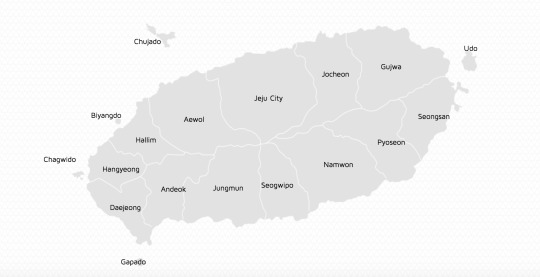
While there is plenty to do on Jeju Island, it’s easy to get lost if you’re taking public transportation. I live here and the bus routes are confusing. Not only are the bus route times inconsistent, but depending on the time of day, the buses will change routes. If you’re only going to visit the island for a few days, then you can catch a cab to get around. Taking a cab is inexpensive; roughly 8,000 won (5 US dollars) for a 20-minute ride.
PUBLIC TRANSIT UPDATE
If you plan to go the cheaper route, then you’re in luck! Apparently, the bus system has been improved. Let’s go over the basics.
Jeju Island is divided into two large cities. The northern half is Jeju City and the southern half is Seogwipo City. Jeju City consists of Chujado, Blyangdo, Chagwido, Hangyeong, Hallim, Aewol, Jeju City, Jocheon, Gujwa, and Udo. Seogwipo City consists of Gapado, Daejeong, Andeok, Jungmun, Seogwipo, Namwon, Pyoseon, and Seongsan.
Jeju buses are numbered based on how far they travel:
100s - Intercity Buses (between Jeju and Seogwipo)
200s, 300s, 500s - City Buses (within city)
400s, 600s, 700s - Village Buses
810s and 820s - Tourist/Sightseeing Buses
Jeju buses are color coded:
-Red buses follow the Jeju Express routes
-Blue buses follow the Jeju Intercity routes
-Green buses follow the branch routes
-Yellow buses follow the tourist areas
Jeju Bus Fare
-One way on a city bus (without transfers) will cost you a flat rate of only 1,200 won in cash (that’s less than 1 US dollar) or only 1,150 won with a T-money Card
-One way on an intercity bus will cost you anywhere from 1,300-3,300 won (that’s 1-3 US dollars) depending how far you are traveling
-One way from Jeju to Seogwipo or vice versa will cost you about $3,300 won
Get a T-money Card
You can purchase a T-money Card (transit card) at any convenience store (or the 7-Eleven at the airport). The card itself will cost 2,500 won and you can add money to it on the spot and refill it whenever you start to run low on transportation funds. Depending on how many places you want to visit, will affect how much you’ll want to load onto your card. If you’re traveling with one other person, then you can save money by purchasing one T-money card and sharing it. But if you’re traveling with a group that might separate or get separated at some point, then it’s probably best to get a T-money card for each person. I’d start by loading 25,000 won onto the card, which could last you anywhere from 2-5 days depending on how far you travel each day.
1 note
·
View note
Text
When Should I Arrive in Korea?
The day I arrived in Korea was also my first day of school. Yes, this is a really dumb idea. I didn’t give myself any time to adjust. If I could do it all over again, I would have booked an airbnb in Jeju so I could arrive a couple days before my start date. This would have allowed me to get some sleep (after a 17-hour flight), get over the jet lag, and explore the neighborhood.
It also takes about 24 hours for your documentation to appear in the immigration database. So the immigration office can’t issue you an Alien Registration Card (ARC for short) until your documents have been processed.
WHAT IS AN ARC?
An ARC is how the Korean government identifies you. It’s just like a social security or ID card. You are legally obligated to register for an ARC card within 90 days after arriving in the country.
WHY DO I NEED AN ARC?
You’ll need an ARC when:
-applying for services like a phone plan, internet, or banking
-to utilize your vision, medical or dental insurance
-to receive pension
HOW DO I GET AN ARC?
Your co-teacher can help you apply for this at the nearest immigration office. There is a fee, so make sure to bring cash. It will take 3-5 weeks for your card to be mailed to you.
If you are on Jeju, I recommend scheduling an appointment with one of the following immigration offices with your co-teacher (so they can translate for you). Make sure the appointment is scheduled during a time that works for both your school and your co-teacher. The appointment should only take about 15-30 minutes.
Immigration & Naturalization Service
Address: South Korea, Jeju-do, Jeju-si, Yeon-dong, 2325-7 202 호
Phone: +82 64-723-1239
Immigration & Naturalization Service
Address: 953 Yongdamsam-dong, Cheju, Jeju-do, South Korea
Phone: +82 64-741-5400
1 note
·
View note
Text
My EPIK Apartment
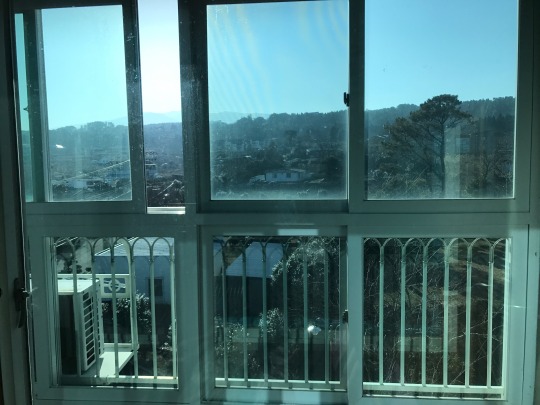
As soon as I arrived at Jeju Airport, I met Soyeon (my handler, in-training) and Miss Chang Mona (Talk/EPIK Placement Director). I don’t know their official titles, so that’s just how I best describe them.
Mona is a sophisticated, scattered, extremely overworked woman and she is almost every EPIK and TALK teacher’s primary contact at the POE. She is Mama Mona and BOSS Lady at the same time and you do not wanna get on her bad side. I have mad respect for her, because she is hardworking, driven, and gets things done, but at the same time, she’s like a ticking time bomb just waiting to go off at any moment.
So Mona and Soyeon immediately take me to immigration office, come to find out my Alien Registration Card Application cannot be processed, because I literally just arrived in Korea a few hours ago and it takes about a day for foreign documentation to appear in their database. So, we put a hold on this and decided to take care of the application the next day.
Next matter of business was my housing. Mona took us to JFLHS (Jeju Foreign Language High School) in Goseong-ri located in the outskirt of Jeju City. By outskirts, I mean this teacher dormitory is in the middle of nowhere. There are no markets, no restaurants, or even cafes nearby, just 2 mini marts where you could grab a snack, some toiletries, or some ramyun. To be honest, they’re so tiny that during my first 3 days at JFLHS, I didn’t even know these mini marts were there.
Back to my housing situation… so after lugging my baggage up to the 4th floor, I realized our dormitory could really use an elevator. As soon as we walked into my unit, I was floored. There were dead bugs everywhere, build-up on the floors and sink, and an unpleasant smell emanating from the kitchen area. Dare I open the fridge. There was no rotten food inside the fridge, but it sure smelled like there had been for months. The best part was finding black tar below the fridge and cupboard space–and we all know how fun cleaning that must be.



Mona seemed really disappointed in the cleaning staff for not doing their job, but we sure got out of there quick. I’m pretty sure she was afraid I was going to complain, but I held my tongue. I decided to suck it up and just clean the place myself. Without any bleach or multipurpose cleaner, it was just me and the tar, the rotten smell, and the bugs for the week. Yes, a week, because EPIK doesn’t just give you the bus routes to useful destinations like the supermarket. Nope, you’re left to your own devices.
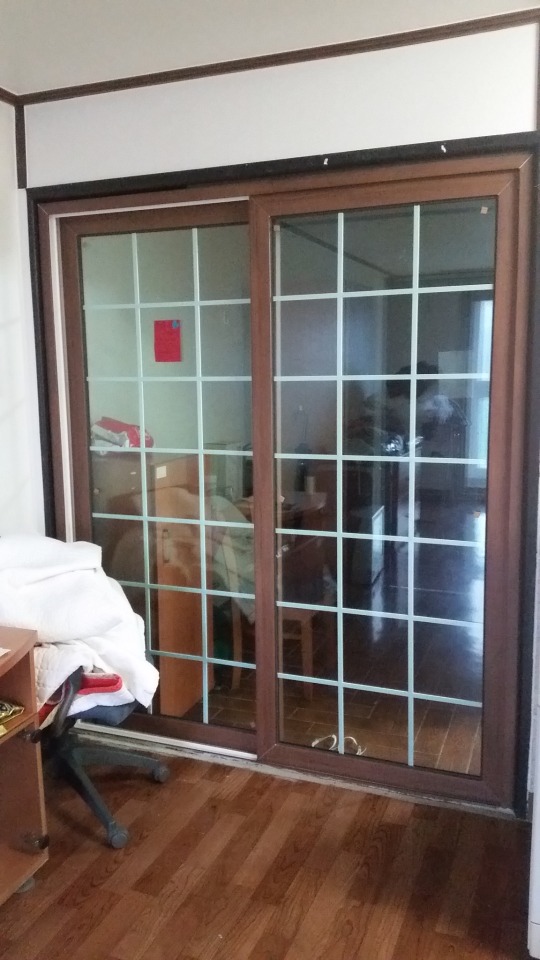

I will say, the view from my apartment, was actually quite nice. I had a scenic view of the mountains every morning.
0 notes
Text
Best EPIK Flight to Jeju

THE FLIGHT YOU WANT TO BOOK
If you will be teaching on Jeju Island, then you will want to book a one-way ticket to Incheon International Airport (ICN) with a connection from Gimpo International (GMP) to Jeju International (CJU). Why one way? Because it’s actually pretty common for guest teachers to quit before their contract ends and it’s also pretty common for guest teachers to do some traveling with their new found fellow foreigner friends around asia, where flights are pretty affordable on a teacher’s salary.

WHEN TO BOOK YOUR EPIK FLIGHT
Honestly, my situation was a little unique. Because I hit multiple road blocks with my application (with the FBI rejecting my fingerprints and EPIK rejecting one of my letter of recommendations) I ended up having to waitlist for the mid-school year intake. It got down to the wire and I had almost given up hope, but I managed to get a placement on Jeju (which was my first choice) on the very last day of placement offers. Here’s the thing–the later you receive your placement, the more you’ll have to scramble. As soon as you receive your placement confirmation in the mail, you need to drive immediately to the consulate and apply for your visa. You can't apply for a visa at the consulate until you receive the official employment offer (NOA). Only after the Consulate has issued you a visa, should you book a flight. I booked mine only a week before the flight and paid around $710.
Luckily, EPIK will provide some kind of flight reimbursement or “entrance allowance”. Upon arriving to Korea, if you submit your original boarding pass (yes, the actual hard copy) to your designated office of education, EPIK will reimburse your flight up to 1,300,000 KRW ($1,200 USD).
KOREAN AIR PROS
I flew with Korean Air Lines and I’m so glad I did. Although I flew economy, it was a somewhat comfortable 13-hour flight. Here are the reasons why I flew Korean Air Lines:
If you’ve ever had airplane food, you know it can be awful, but Korean Airline food is delicious. Get the bibimbap! The gochujang (red chili paste) gives the bibimbap so much flavor. The one they serve with your meal is mildly spicy, salty, and savory.
The seats are have plenty of leg room, but the 13-hour flight from California to Incheon was uncomfortable for me. My back and butt were definitely feeling it by the sixth hour. But, then again, what 13-hour flight isn’t uncomfortable?
Every passenger gets their own personal movie screen with free movies
Every passenger seat has a USB charge port so you can charge your devices
If there are horrific delays, they are very apologetic and do provide some kind of food voucher or air line credit
The flight attendants are attentive and friendly

KOREAN AIR CONS
The worst thing about my flight experience was transferring from an international flight to a domestic flight. When you arrive in Korea and transfer to another Korean domestic flight, there is NO AUTOMATIC TRANSFER. You will need to claim your baggage and check it in again for your next flight. Domestic Baggage allowance and overweight fees DO NOT APPLY if you are connecting from an International Flight. However, if you have a connecting itinerary to Busan with a Korean Air transit domestic flight, then your baggage will automatically be transferred.
MY ITINERARY
LAX > ICN 11:30 PM - 4:40 AM (13 hours)
GMP > CJU 7:20 AM - 8:30 AM (1 hour)
TANSFER RECOMMENDATION
If you are not Korean or your Korean is limited, I highly recommend at least a 4-5 hour transfer window! I know that sounds long, but listen... I had almost a 3-hour window, but somehow the stars aligned against my favor.
My flight from LAX to ICN was delayed about an hour. Then upon arriving in Korea, I was detained by customs. Apparently, I have the face of a criminal. A customs official kept looking at me as if he was struggling to read my polygraph while conducting a nonverbal interrogation. After waiting in the long “I’m a Foreigner” line, the customs official who conducted some failed telepathic lie detector test on me, had me kindly escorted to a restricted room. As I sat there patiently awaiting to miss my connecting flight, I was asked some very basic questions by a different customs officer. “Where are you from? When is your birthday? Where are you going? Who is your employer?” It was more like a survey than an interrogation if you ask me. If I was a criminal, I’d still pass with flying colors. When they realized they had no reason to detain me, they decided to conduct some digital fingerprinting (eye roll). Another 5 minutes wasted. By the time they let me go, I had less than 40 minutes and let’s be real, I’m no speedster.
I ran down the nearest escalators and sprinted to baggage claim to find that it had already stopped running. “Uhhh… great. Where’d my bags go?” The baggage conveyor belt was empty. My baggage was MISSING! I figured it had been dragged off on some trolly, because no one had claimed it. I ran around the airport until I found some guy hauling my luggage away. Thank GOD I got my 80 pounds back. It was really a lose lose at this point. I was in Korea for less than an hour and already, I knew, we had started on the wrong foot. But there was no time to panic, I was ready for this, “Bring it on SK.” But then I couldn’t find the train (which is the faster route to Gimpo), so I had to take a 40-minute bus ride from Incheon to Gimpo. Definitely, didn’t make the connecting flight. Luckily, while I was waiting patiently for the wrong bus to appear, a Korean flight attendant struck a conversation with me. She spoke a little English and I explained to her my situation. She quickly directed me to the right bus line and boarded with me. She told me the airport was on her way home, so she didn’t mind helping me get my flight changed. I felt such gratitude towards her. I couldn’t believe her kindness. We arrived at Gimpo and she helped me exchange my ticket for the next flight. It was literally departing in 10 minutes. I swear, everything was one exhausting rush from one place to another. It’s like one of those days where you’re late to EVERYTHING because the universe is toying with you.

KOREAN AIR BAGGAGE ALLOWANCE
The most up-to-date baggage policy can be found directly on their website:
Flying to/from America
Flying to/from Europe, Middle East, Africa, Oceania
If your flight has a transfer where you’ll need to transfer your baggage manually, I highly recommend packing only 1 large check-in luggage and 1 large carry-on bag. I had 2 check-ins and 1 large carry-on. It was so ridiculous trying to transfer my baggages myself. As soon as the flight attendant let me go off on my own, I fell down the escalators at in Gimpo Airport. With all of my strength, I was trying so hard to balance 2 pieces of luggage and my carry-on up the escalator. As soon as I got half way up, the weight of the luggage and the wheels caused me to lose balance. It felt like I was free falling in slow motion. Probably the most humiliating that’s happened to me in public. Don’t do it. Pack lightly. You can have things shipped to you later. Yes, it’s expensive, but missing your connecting flight is not worth the trouble.
0 notes
Text
EPIK Flight

My mom and sister sending me off at LAX was surreal. We said our goodbyes over and over and they watched as I went up the escalator and waved them a final goodbye. But as soon as I got through the security check, I felt my heart pounding. Passing through security, I began to feel nauseous...
I headed straight for the restroom. I had no idea what was going on with me, but I felt a huge rush of anxiety in my chest as I struggled to breathe. Moments later, I realized I was probably having what people would call an anxiety attack. After the shell shock wore off, I could hear myself saying, “You can do this. You can do this…” over and over again.
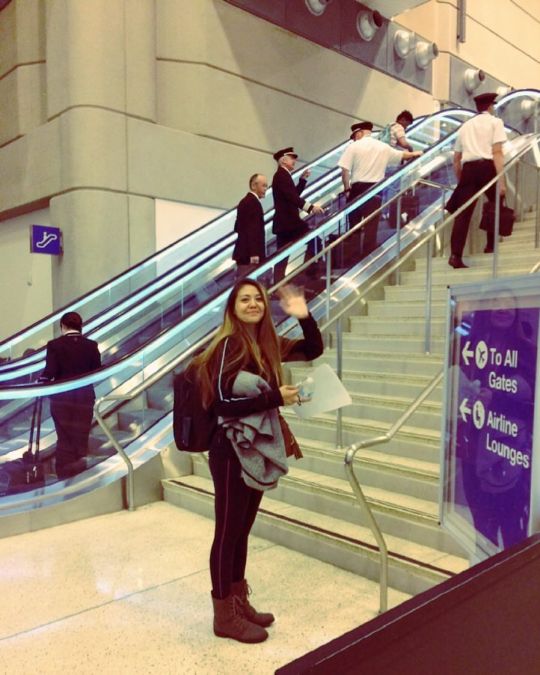
Truth is, I had never lived in any other country before. This was the first time I would be traveling alone. I guess the thought of living in a foreign country on my own didn’t actually hit me until I was REALLY alone in the airport. I’ve always been an independent person, but family was always at an arms length if I needed anyone. I kept asking myself, “Oh my goodness. Are really doing this?” After finding my gate and sitting there for half an hour. I finally settled my nerves and before I knew it, I was boarding the plane.

Dinner was delicious. I was given a choice between chicken with potatoes or bibimbap, so it was a no brainer. I opted for the classic Korean meal. The bibimbap comes with grounded bulgogi, cucumbers, spinach, mushrooms, pickled radish, bean sprouts, white rice, gochujang (red chili paste), seaweed soup, fresh mandarins, and your beverage of choice. Honestly, the best airplane food and this is flying economy.
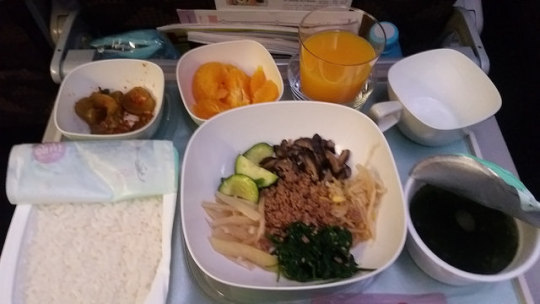

To my disappointment, they ran out of chicken porridge during breakfast, so I had to settle for the Western breakfast, which was nothing special. I’m not a fan of ham or ketchup with my eggs, so this meal wasn’t as enjoyable for me. I couldn’t finish the main dish, so I turned to the blueberry yogurt and muffin. The muffin was also a bit dry, but the yogurt, pineapple (which probably isn’t the best combo) and some hot tea was just enough for me.
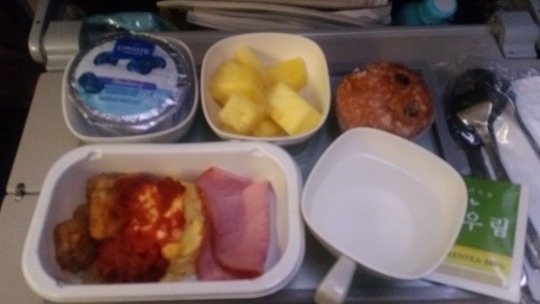
This is only my second time flying with Korean Air, but I would definitely recommend their economy flights. They are as comfortable as economy can get. I will continue to fly Korean Air so long as I can afford it.
For more info on booking a flight from LAX to Jeju and baggage restrictions, check out my post for EPIK teachers: http://teacherjoy.tumblr.com/post/180338106804/best-epik-flight-to-jeju
0 notes
Video
1 note
·
View note
Text
What to pack for Jeju Island?

Packing is one of the most stressful, yet therapeutic tasks on the to-do list. I probably packed my bags a hundred times. Yes, I’m indecisive and obviously, I’m Type A, so let’s see how much I overpacked!
WHAT I ACTUALLY PACKED FOR JEJU ISLAND
CARRY-ON (25 lb max)
Electronics: headphones, power bank, pc/laptop, and chargers
Hygiene: toothbrush, toothpaste, floss, mouthwash, and deodorant
Medication and mosquito repellent
Gifts for all your principals and co-teachers
PURSE
My Phone, Camera, Money, Passport, Visa Docs, and Boarding Pass
CHECK-IN #1 (50 lb max)
SCHOOL OUTFITS: 5 days worth of business casual outfits and 1 blazer
WINTER WEAR: A parka, coat, thermal, scarf, gloves, beanie, and leggings
CASUAL WEAR: yoga pants, 2 jeans, and 2 pairs of jean shorts, a couple t-shirts and undergarments
CHECK-IN #2 (50 lb max)
SHOES: 2 pairs of comfortable walking shoes and a pair of sneakers
TOILETRIES: full body towel, shampoo, conditioner
BEDDING: mosquito net
ELECTRONICS: power strip, adapter & converter
OTHER: personal documents, photos, stickers and candies for my students
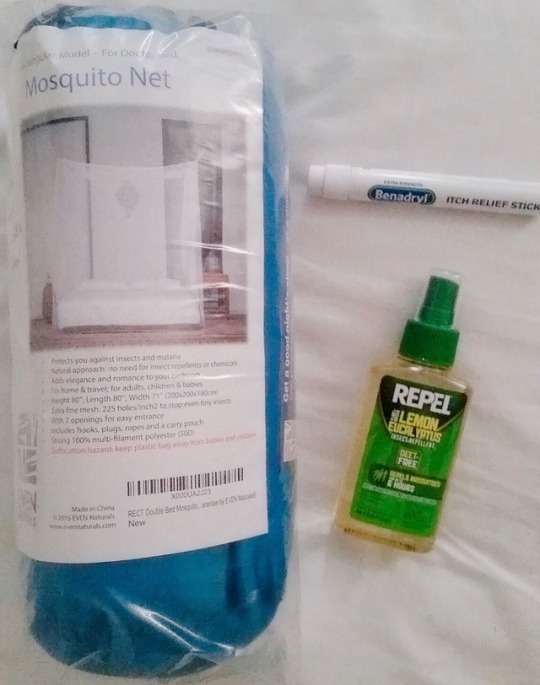

MY ACTUAL RECOMMENDATIONS FOR THE NEW EPIK TEACHER ON JEJU ISLAND
Don’t do what I did. Don’t pack 2 check-in luggages. It will make transferring impossible. Clothes take up so much space. Don’t bring so many. You can buy so many more fashionable outfits in Korea. What you really need are the following things below.
ELECTRONIC RECOMMENDATIONS
8+ GB USB (for lesson plans & teaching aides)
an external hard drive (personal documents and photos)
power bank (a must for travelers)
laptop (make sure it is NOT MAC as they are not compatible with most EPIK Korean CD-ROMs or online CD formats)
adapters & a converter (standard power outlets run 220V in Korea, if you are from the US or Canada the standard is 120V, so you’ll need to check if your electronics are dual voltage by doing a quick google search)
pocket flashlight (blackouts/emergencies)
MEDICINAL RECOMMENDATIONS
mosquito net (this is a hard find in Korea; better to buy one on Amazon of at an REI before you leave your home country–you may need it your first night if you’re arriving between May-Nov)
rubbing alcohol (help reduces mosquito bites immediately–worked better for me than any cream or ointment)
mosquito repellent (I would invest in some citrus candle repellents before you arrive in Korea. Also, the Korean supermarket “Lotte Mart” carries repellent that you can plug into an outlet. These are by far the most effective!)
any medicine you are already taking (medicine in Korea is often considered much weaker than the medicine in the USA, so if you’re life depends on it, bring your prescriptions and year supply of medicine)
Inhaler (if you are asthmatic, the humidity may irritate your lungs, so pack your inhaler if you have one; you can also get an inhaler for very cheap at a doctors visit, as health care in Korea is extremely inexpensive)
OTHER RECOMMENDATIONS
workout clothes (good fitness apparel is expensive in Korea)
full body towel (bring a fluffy full body towel because even if you’re lucky enough to find one in Korea, you’ll be paying a ridiculous amount for it)
rain boots (unless you live in Seoul, it might be a little difficult to find a decent pair of fashionable rain boots. The large shopping markets don’t carry them on Jeju. Also, if you are a size 7 or larger in women’s shoes (USA), don’t expect to buy shoes in Korea as most Korean women have smaller shoe sizes.
photos of the people you’ll miss (this is self-explanatory)
gifts (bring something native to your hometown that you can share with your coteachers, principal, vice principal, better yet, the whole staff. I’m not kidding– this is important for a good first impression at your schools) *I’ll do another post with good and bad gift ideas for making a good impression.
Aside from a purse, I highly recommend only packing ONE CHECK-IN and ONE CARRY-ON. It will make your life so much easier. If you have a transfer flight, chances are you will have to transfer your baggage yourself. I had to do this and it was ridiculously difficult. I will never do this again. Trust me, you can pack all the things I listed above in 1 suitcase. The key here is to use luggage space savers! You can compress your clothes into about half the original size.
1 note
·
View note
Text
Irvine Korean Cultural Festival

Every May, Irvine holds an annual Korean Cultural Festival at the Civic Center Plaza. I thought I would check it out to learn a bit of history and tradition, but I just ended up eating everything. There weren’t a ton of vendors, so I got to try almost everything. I’d like to share my least favorite and favorite snack food from the festival.
My Favorite: 불고기 Bulgogi is a sweet and savory dish of thinly sliced marinated and barbecued pork/beef. Actually, it isn’t so much of a snack food as it is a dish, but they had bulgogi nachos at the festival and they were yummy!

2nd Favorite: 떡볶 Tteokbokki is a Korean street food staple. These spicy rice cakes are simply boiled and coated in sauce made from gochujang (red chili pepper paste), soy sauce, and sugar. Personally, I find them very tasty! But after a few pieces, I already feel like I’ve gained a pound. I would probably only buy this if I had someone to share the carbs with. ;)
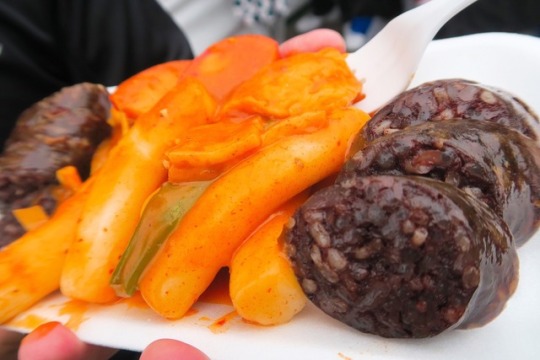
My Least Favorite: 순대 Soondae is a pork sausage mixed with rice and vermicelli noodles. It’s a common street food, but I personally didn’t like it. I’m not a red meat person to begin with, but this was chewy and tasted somewhat sweet yet bland.
0 notes
Text
Flight Check!
A one-way flight priced at 597 US dollars cost me 710 US dollars after taxes. That’s a lot of tax, but EPIK reimburses flights if provided the original boarding pass.

0 notes
Text
Getting my E2 VISA

The E2 visa in Korea is a work visa specifically for language teachers. You can apply for an E2 visa if you have proof of sponsorship by an educational institution in Korea in the form of an employment contract, placement, NOA, etc. An E2 visa will tie you to your specific employer, so if you decide to change employers before your visa expires, then you must apply for a new visa in order to avoid deportation.
1 note
·
View note
Text
Notice of Appointment
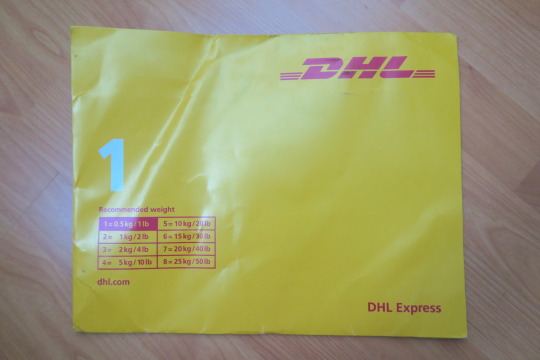
You will need all the enclosed documents from the packet in order to apply for your visa at the Korean consulate or embassy. Please apply for your visa as soon as you receive the NOA packet. Book a flight after getting a guarantee from the consulate/embassy that your visa will be processed and approved.

Orientation Team No.: Team 4
Orientation Venue: TBA
Expected arrival Date: September 26th, 2016 (KST)
Check-in counter: Arrival Floor (1F) at Incheon Airport
Shuttle Schedule: The group leaves at 10:00 AM sharp
Venue Address: TBA
Venue Address in Korean: TBA
Most of all, congratulations on your admittance.
Korvia-EPIK
0 notes
Text
List of EPIK Documents
When I started this process, I thought the hardest part was going to be the application and interview–basically, getting accepted into the EPIK Program. It turns out, the hardest part actually comes after you get your acceptance.
The hardest part of this whole process is being able to obtain and mail all your documents within a short window. Even if EPIK formally extends you an offer of acceptance, it doesn’t mean you have a job. Why? Because you can’t officially be placed at a school until they physically have all your documents. Every year, EPIK seems to accept more teachers than there are positions, because it’s expected that many teachers fall out of the hiring process. This is what makes the hiring process “competitive.” The only way to secure your placement at a school is to submit your documents immediately after you accept the EPIK job offer. Now, it doesn’t mean you hastily submit your documents without thoroughly reviewing them. One mistake in your application or 1 missing business card, could delay your placement for weeks. My advice: be extremely organized and tedious. When in doubt, always ask questions asap.
Take it from someone a perfectionist, it is easy to screw this part up. I applied for the Fall term, which is actually not the ideal time to come in since it’s mid-school year, but if you are applying anyways, then here’s the list of documents you’ll need (assuming you’re not applying from Korea and that you’re not Korean). My advice: make a spreadsheet; it will keep you incredibly organized and on top of everything you need to succeed! If you want help with organizing that spreadsheet, I’d be more than happy to help.
List of Required Documents:
① Application Form
② Photocopy of Passport Information Page
③ Passport Sized Photo
④ Apostilled CRC
⑤ Apostilled Diploma
⑥ Sealed Transcripts
⑦ Two Original Recommendation Letters
⑧ TEFL/TESOL/CELTA Certificate or Teaching License
1 note
·
View note
